I first met Gary when we were about 18 years old at a battle of the bands. He blew my mind. Later I joined the band as a drummer and we had some great times together. Fast forward another 18 years and Gary is still at it.
I volunteered to record and produce some music for the band, resurrecting an old hobby. I upgraded my Scarlett 18i8 3rd gen audio interface to a Presonus Quantum 2626 and we’re poised to record some music and I’d like to bring you along for the journey as we fill out our rack and the jam space, funding it mostly by selling off older gear. I hope you can gain something from my years of experience.
It astounds me the quality you can get for the price these days! The fact that we have over 20 years worth of digital audio gear to draw on is incredible. The technology has come so far.
Our Gear Goals.
Quality is a priority. Buying used is a given. Amazing price to performance ratio is the goal. Everything must fit in the rack, preferably directly mounted and not on a shelf. We have to record everything live. That’s just the way it works with a band like this. The energy and band communication is crucial to the sound. 26 tracks seemed more than adequate. I also would like some preamp flavors, room for expansion, and maybe some compressors for tracking drums in due time.
Choosing an Interface.
On a budget, you can’t beat the Behringer umc1820 if you can settle for 18 inputs. The AD/DA conversion is wholly adequate, the preamps are also quite adequate, and it allows you to add better converters via ADAT for your higher priority tracks. These can be had for as low as $140 on the used market. I think we want to aim for a bit higher than Behringer so we’ll explore our options.

If you’re like us and need 26 tracks, listen up. If you’re on a desperate budget and willing to risk outdated dodgy drivers, the old Firewire M-Audio Profire 2626 can be had for $60, and if you need a firewire card they can be had for $15. While I would avoid using legacy hardware as a main interface, if you’re on a super tight budget it could be your ticket. If it doesn’t work as your main interface, you can always use it in standalone mode to add 8 additional tracks via ADAT to your main interface! (in theory you could build a 24-26 track rig for under $200 using 3 of these.) Because of it’s potential for reuse, it’s definitely worth a shot if you’re on a tight budget.

I was able to secure a used Presonus Quantum 2626 (a $700 new interface) for under $200 because it had some major damage to the chassis. These deals can be had if you use my methods I describe later on. This is a Thunderbolt 3 interface that is known for having the lowest latency, so low in fact you don’t need an on-board DSP mixer for routing and monitoring live sessions. This way you can track live with plugins straight out of your DAW! (kinda revolutionary) -seeing as this is the brain of your entire rig, if you can swing one go for it, they can be had used for as low as $300-350. (or maybe less if they’re damaged like a soup can haha.) While they do require a slightly newer computer, a mac mini 2018 16gb can be had for well under $200 if you need it. By the way, you can run 2 of these in tandem for 52 tracks!

If you want something for a lot cheaper but don’t want to get a Behringer or you want 26 inputs, the Presonus Studio 192 has most of the same features as the quantum but it was made a bit earlier, with usb 3.0. It wont have the same low latency but it would be a great step up from a Behringer umc1820. The Presonus Studio 192 runs for about $250 used.

Expanding your Interface
These interfaces generally come with 8 analog inputs along with 10 or 18 digital inputs. ADAT can carry up to 8 channels per line. S/PDIF can carry 2 channels per line. Don’t confuse an RCA cable for an S/PDIF cable. An S/PDIF cable is meant to carry digital data, it is 75 ohms. ADAT uses an optical cable called a Toslink cable.
So now you need ADAT expanders to convert your Analog to Digital and your Digital to Analog, 8 channels at a time!
The go-to option for most people is the Behringer ADA8200, it can be had for $150, it’s in the same class as the Behringer umc1820. Like I said before, wholly adequate.

Having a budget mindset I wanted to see what was out there for a competitive price, and perhaps better quality. Well sadly I don’t think it can be found in your typical ADAT expander. If you want a step up you’re looking at paying substantially more. But then I started looking at old Firewire interfaces that can be used in standalone mode. I have a firewire card in my PC, crucial for setting them up in standalone mode, as this needs to be done in software for most (if not all) interfaces. Because firewire is so old at this point, you can get quite a bargain. They tend to sell slower, so sellers may be willing to cut you a huge discount.
I’ve already mentioned the M-Audio Profire 2626, this is a great option as a standalone ADAT expansion coming in at $60 -The converters and preamps may leave something to be desired, but with a -20dB pad and 74dB of gain, you can run any mic you want. A very useful preamp and you get 8 of them. Try your best to get one which includes the breakout cable. The breakout cable has the BNC word clock ins and outs, and many times they’ve been lost. While you can pass word clock through ADAT, it’s best to send it through BNC.
Next up, after pouring through old Sweetwater archives, researching and comparing. I think I found us a winner: The Steinberg MR816X and MR816CSX. There were many competitors but seeing as I’ve seen them sell for as low as $80, it’s a no brainer. While I’m mostly going off of comments on gearspace, I’m hoping the preamps and converters are superior to the Behringer ADA8200. These sold for $1000 in their heyday. In any case it’s cheaper and should be adequate. I’ll probably be buying one soon and seeing how I like it. I’m sure it will be quite adequate and I’ll be happy to keep it around. One downside I should mention, there is no way to bypass preamps on channels 3-8. Not an issue for me since I plan to add 26 inputs, I don’t mind if 6 are fixed. Also I’ve read these are only good for A/D over ADAT and not D/A. Fine with me if true, but hopefully it’s not. The manual is super unclear about standalone capabilities. You can realistically expect to pick one of these up for around $100+ using my methods.

I’m going to mention one last option because it might be the route we take (along with the Steinberg.) The Arturia Audiofuse X8 IN. If you only need the extra inputs (no outs) the Audiofuse X8 IN from Arturia is a pretty recent product with not much in the way of quality reviews, but I’ve been completely blown away by the value of my Arturia Minifuse, so when Arturia released its expanded line of interfaces and ADAT expansions, it piqued my attention. Released less than a year ago, you can pick one up on the used market in the $260-290 range. They have no preamps and are line inputs only, perfect for adding your own preamps. Knowing they focused all their energy on conversion only gives me peace of mind it’s a simple and quality unit at a solid price. After owning the minifuse, I’m actually quite the Arturia fanboy, and have immensely enjoyed their foray into audio interfaces.
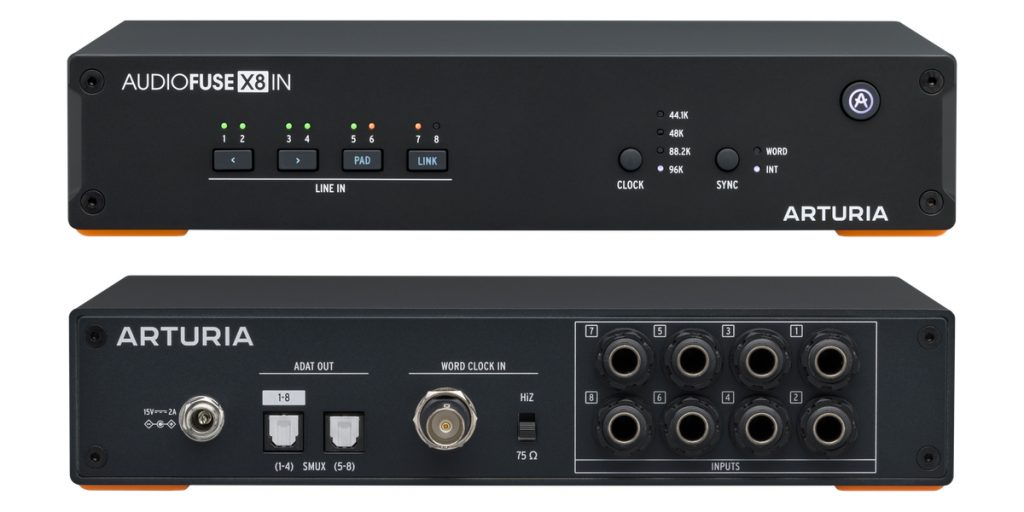
The last Expansion: 2 channel S/PDIF Preamps
Let’s start out with our cheapest option here, the M-audio Profire 610. Like it’s big brother the 2626, this can be set to standalone mode with a firewire port on mac or pc. It has 2 headphone outs and a -20dB pad on each preamp. With 74dB of gain and a certain preamp flavor that may not work on everything (but great for some things!) -it’s a perfect option for most anyone needing to fill out the extra S/PDIF i/o on their interface. $40 all day!


We’ve all heard of the Focusrite Scarlett series (the little red box.) Well some of them can be set to standalone mode! While I would avoid the first generation, the second and third are in play, so next up is the Focusrite Scarlett 6i6 2nd gen. This offers solid conversion and preamps (the same as in the Scarlett Octopre) $90 easy peasy.
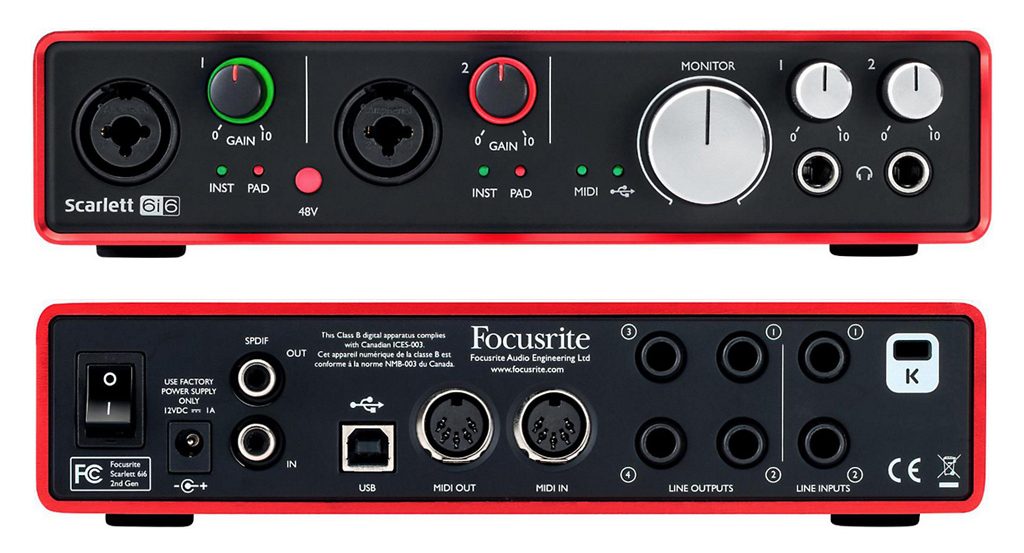
There are more to mention but because this is a budget focused article I think I’ll leave it at that. If you’d like more options leave a comment and I might write a follow up article with some slightly higher budget options. Also left off the list that you may want to check out is the ART DPS II Tube preamp (starved plate design) left off the list for its age (aging electrolytic capacitors, outdated A/D converters.) I’ve seen them go recently for as low as $120.
Quality Preamps
Now that we have a bunch of “clean” preamps designed for bringing in a clean signal path for later editing in your DAW, you may want to add some color and flavor. For what we want, we look for preamps using tubes and/or transformers. Tubes and transformers add flavor.
If you plan to buy many preamps, you’ll save money (and space) by investing in a 500 series rack. The 500 series is a standard, the units contain inputs, outputs, and power supplies for up to 10 500 series units. Preamps, compressors, eqs, or any piece of outboard gear that will fit the format. You can pick one up in varying sizes from $150+. I’ve seen the Midas L10 10-slot 19” rack mountable unit for as low as $250. It takes up 3u and holds 10 units. A rack within a rack.
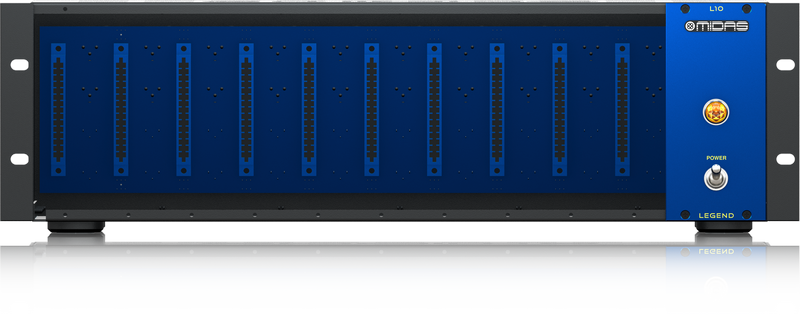

First up is the cheapest and lowest quality of the bunch, but I’m suggesting it for those of you on a super tight budget and wanting some sweet tube flavor. The StudioProjects VTB1 tube preamp. After extensive research, I believe this to be one of the best values in budget audio. Much better than a Presonus bluetube (according to Sound on Sound magazine.) You can pick one up for $50 or less.
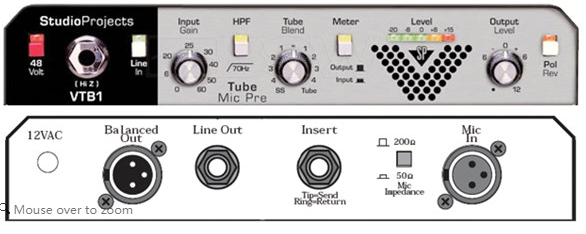
Next, I actually can’t believe how cheap this is but I guess the Neve 1073 clones are starting to get cheap… The Alctron MP73A (500 Series) is $129 on ali… The feedback is legit. It’s more than usable, it’s actually pretty great! You won’t find a preamp with such a strong price to quality ratio. The value is insane. If you would like to get it within our borders, I hear the one distributor on reverb will take a lower offer, somewhere in the $145 range.
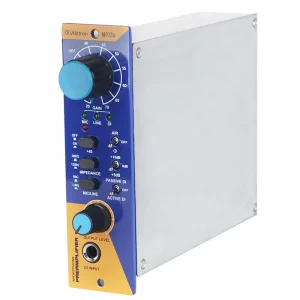
The Art Pro MPA II is probably the cheapest tube preamp you can get that still a) sounds competent, and b) isn’t in immediate danger of parts failing. It’s a starved plate design like the VTB1 but still holds its own. Considering you can find one for $200 with a tad bit of patience, it’s a bargain! (it’s 2 channel so that is $100 per preamp!)
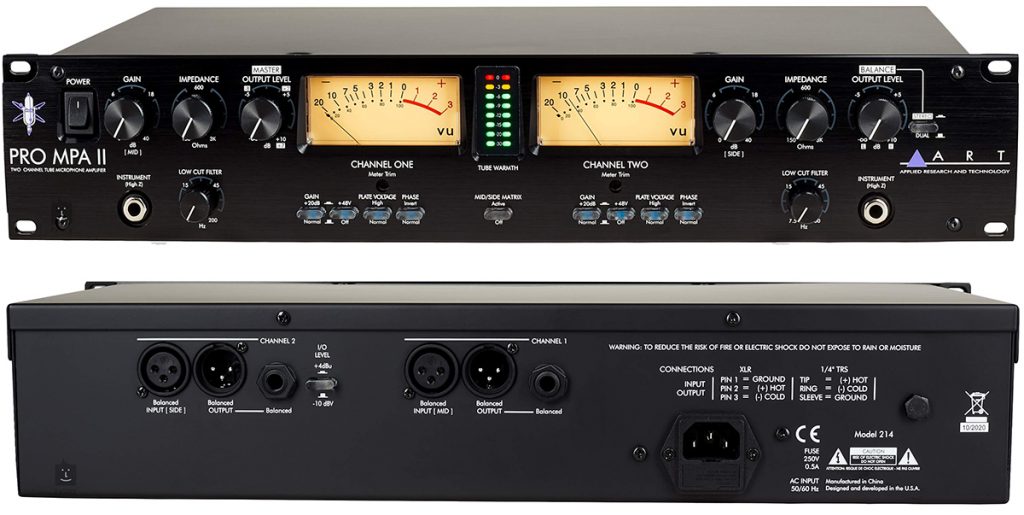
The Art Pro Channel II is basically the same as the Pro MPA II, but instead of being a dual channel preamp, it’s a single channel preamp with an EQ and tube compressor. Quite useful, especially if you buy a pair. Not as plentiful as the PRO MPA II so you may have to be more patient to find your ideal price, but you can pick one up for $200-250. If you buy a pair I would swap all tubes so they match!

Headphone Monitoring
A necessity tracking so many people along with an engineer in the same room! Lots of cables going everywhere!
There is really only one choice if you’re looking for an affordable used 1u headphone amp, and that’s Behringer. I’m not excited about it, but they should be able to drive my 63 ohm headphones. They have a variety of old 1u headphone amps. Expect them to be at risk of breaking at any time, but considering they’re so cheap, I’ll be happy if it lasts 2 more years (but I expect more tbh) most models are able to run multiple selectable mixes. There are 4 channel and 8 channel models such as the Behringer HA8000. I won’t list any more specific models since there are a variety, but you can expect to pay $30-80


Patch Bays and Cables
Really, go with what you can get your hands on at a good price, if not buying a name brand patch bay, maybe a homemade one, I would look for neutrik or switchcraft connectors if possible. Look for local ads of studios trying to get rid of old cables and patch bays as they move away from outboard gear. You can usually work a deal. If they were patch cables they were probably hardly moved. I would avoid chinese cables on amazon and buy name brands or small brands known for quality. For ¼” patch bays you can get an old Behringer model for like $30 such as the Behringer PX2000. For an XLR patch bay, the ART P16 can be had for $60-80 on the used market.


The Rack
For our use case, one large rack with room to expand is perfect. 12u-16u or maybe more if its classy enough. Buy local, this is always the way with racks. Be patient, wait for the right rack to pop up. Racks used to be plentiful and cheap, but like everything in this economy, anything with true value has gone up substantially. But you can still score some deals from someone just looking to get rid of a large piece taking up space.
How to get the deals!
After looking around you may think some of my estimates are a little low. After I show you some of my methods, you’ll be able to score deals like I do on the regular. (Or maybe you’re reading this a year later and prices have changed. Either way the methods still stand!)
My methods
I use 2 services. gixen.com for auction sniping and flippah.net for alerts. If you use ebays sluggish alert system, you’re gonna lose out, hands down. Gixen is great for sniping auctions for the lowest price possible, but I get most of my best deals through flippah alerts and making my own offers
Review the sold history! Look on ebay and reverb sold history! Figure out what the lowest prices are. Whats rare to see? Whats common enough to attain? How frequently are they popping up for sale? How fast are they selling? All good information to know when making an offer or waiting for alerts.
Make an offer! The worst they can do is say no! Keep in mind that on ebay you have 5 chances to make an offer on a single item before you lose the ability to make offers, so make it count!
Patience! Wait it out. If you know the item price history and you’ve done that research. Wait out the alerts! You’d be surprised it can go even lower from someone who wants to make a quick sale! If you can wait a few weeks or a month to get your price, do it! It could save you hundreds.
Be quick! all the best deals are posted and gone within the hour, sometimes minutes. In one case I saw less than a minute!
One note on auction sniping. When you type in your max bid price, ask yourself: ‘will I be mad if I lose this by 1 dollar?’ and if the answer is yes, just add the dollar! Repeat process until you’re totally fine with losing. You might be upset if you lost out and the winner paid $1 more than you. Especially when there is a massive discount on the line. Keep in mind you’re still trying to get a deal!
If you bid often on ebay, gixen is a worthwhile and affordable investment that will save you hundreds or even thousands. Free to use with limitations if you’re a casual user.
One note on flippah alerts. When you buy something, make sure you buy it through one of flippahs direct links so they can earn a commission. Not only does it help this free service keep the lights on, but your account gets prioritized when you earn them a commission. Win-win. Support Flippah!
One last tip. If your seller doesn’t have the option to make an offer, you can always message them asking for a lower price. eBay makes it really easy for the seller, when it reads your message, it automatically gives the seller a button to press to accept your offer price. It then sends you the offer to accept. Most buyers don’t know this!
Here is a rough draft of our rack:
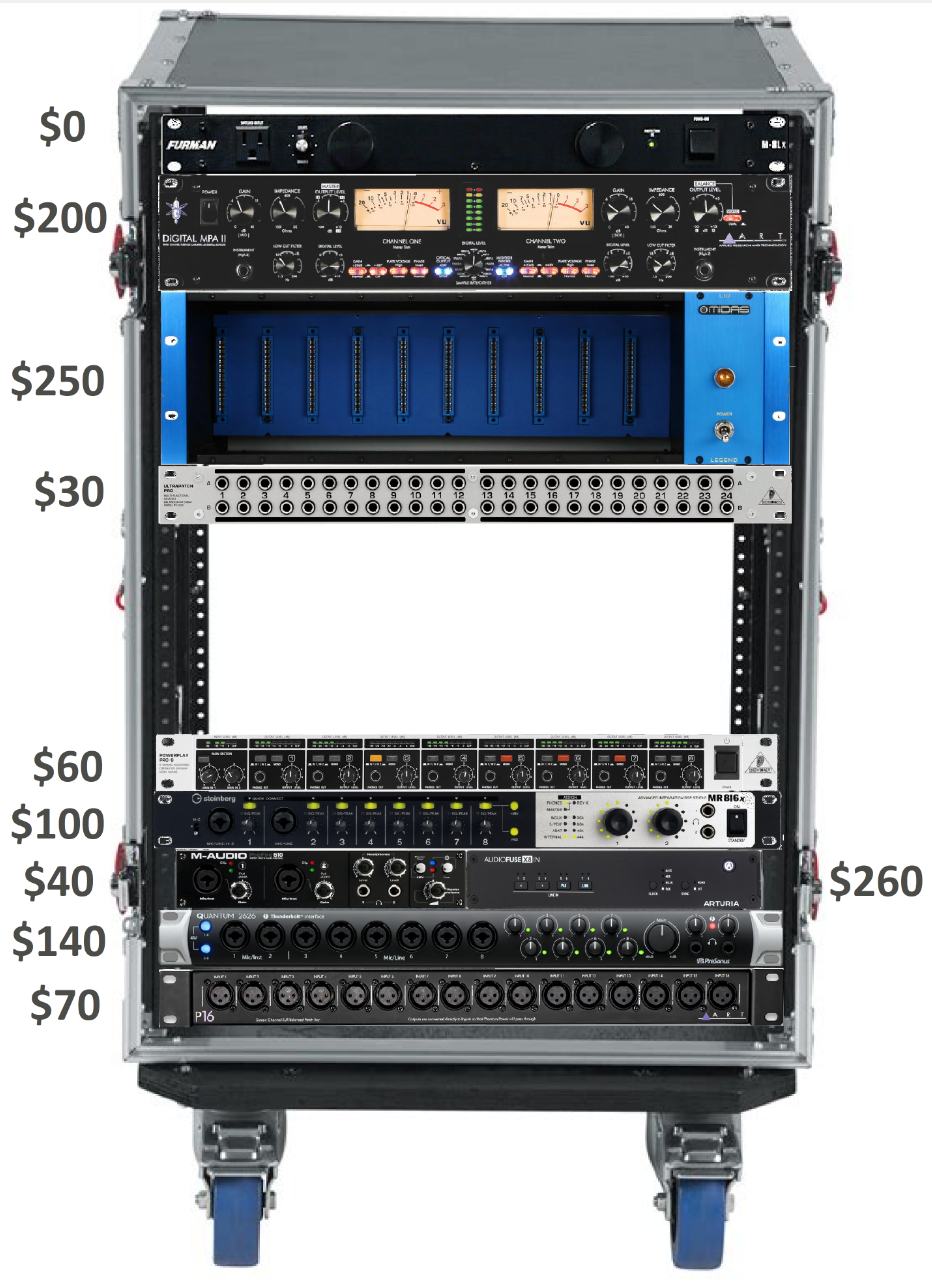
Good luck setting up your studio, I hope I’ve been some help!
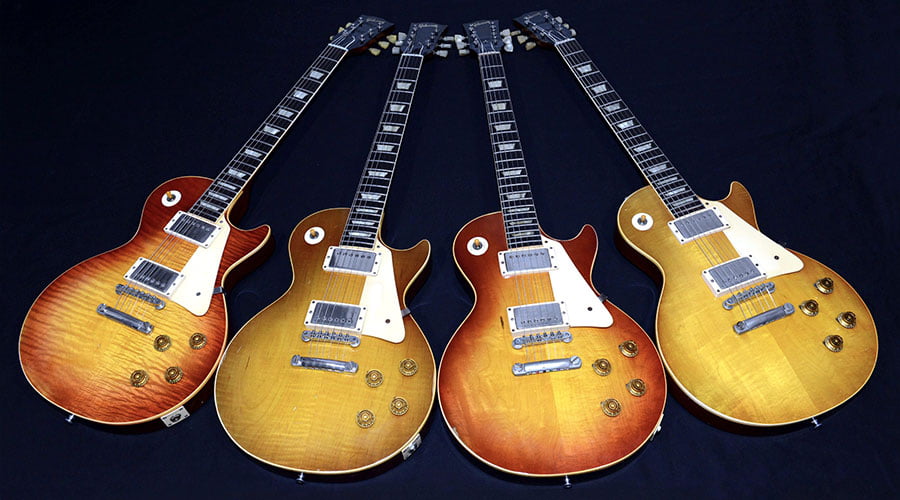
Leave a Reply